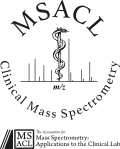Přístup odepřen
Požadovaná stránka je přístupná pouze pro přihlašené členy ČSHS.
Kontextové menu
Uživatelský účet
Zajímavé odkazy
LabRulez
Přehledný a vysoce informativní web (nejen) o analytické hmotnostní spektrometrii
České muzeum hmotnostní spektrometrie
Unikátní technické muzeum věnované hmotnostní spektrometrii
Česká terminologie hmotnostní spektrometrie
České názvosloví hmotnostní spektrometrie zveřejněno na stránkách Masarykovy university v Brně.
(Archiv)









